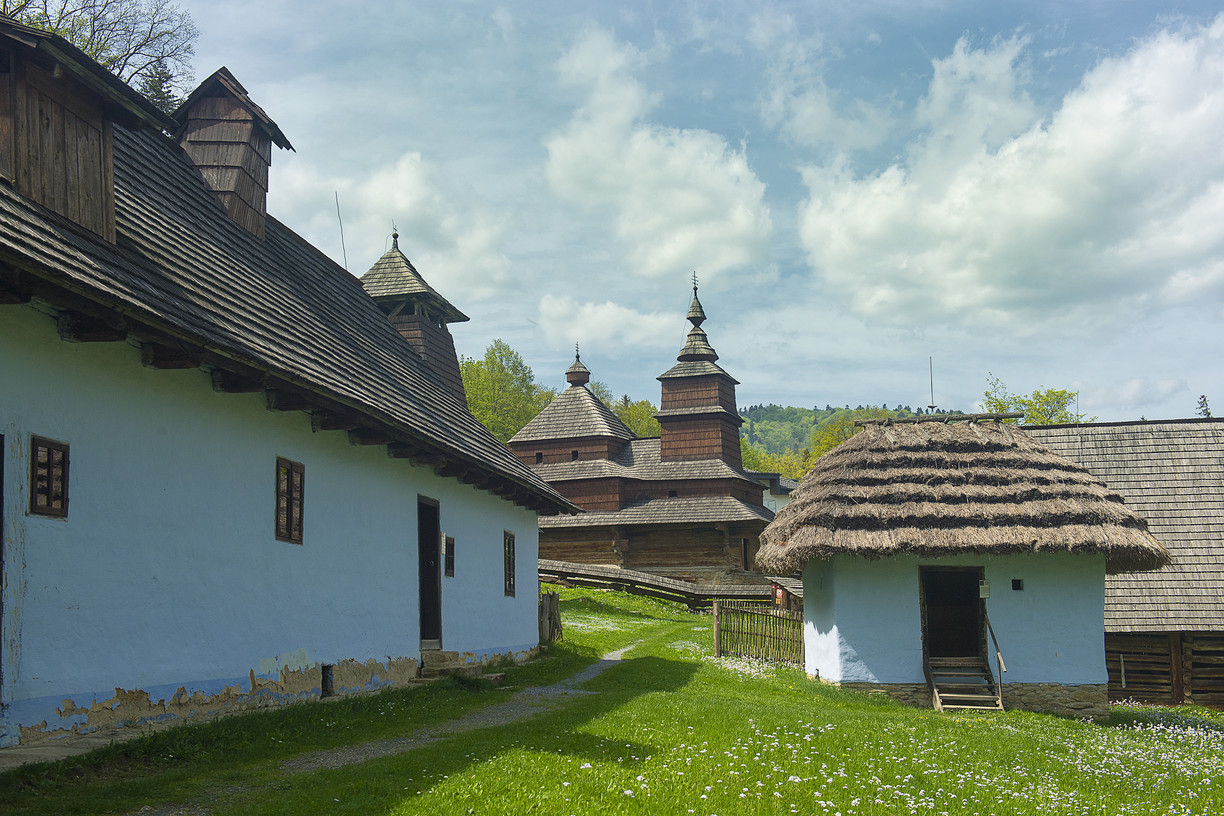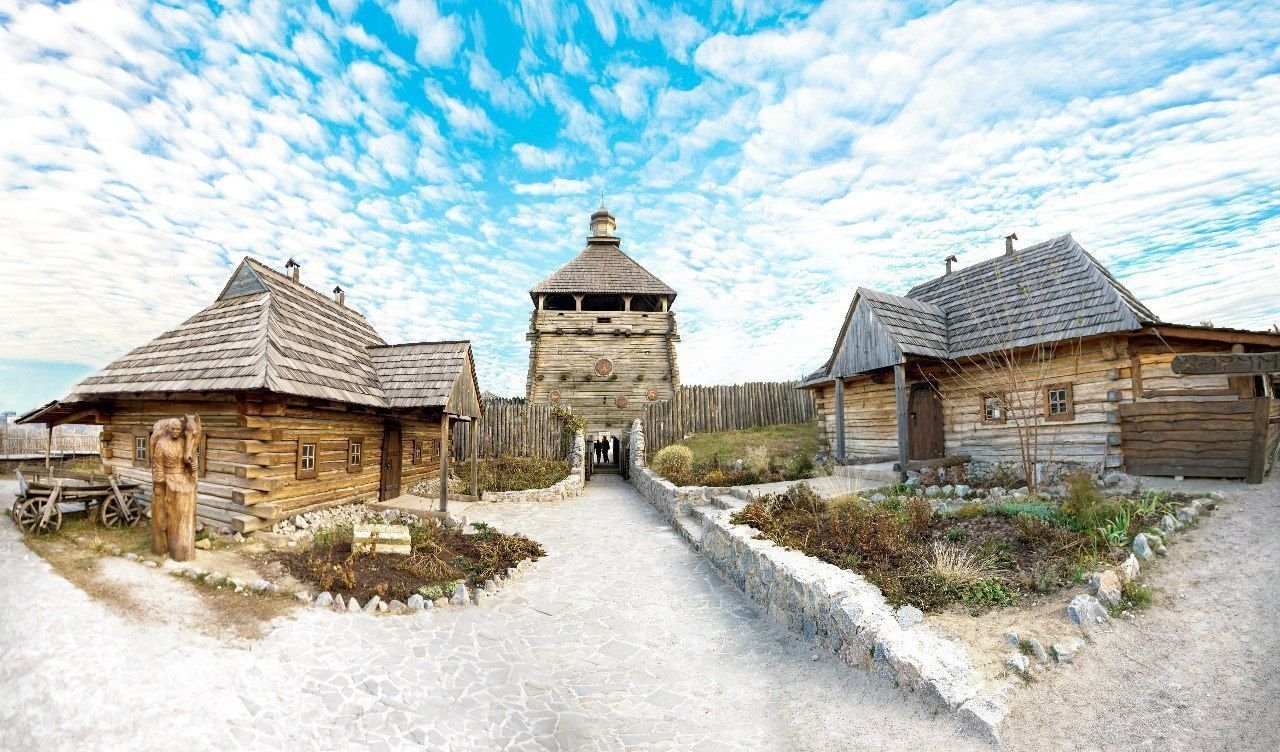
Cool house layout for a lordly manor in one of the villages:
similar for peasants:

Notice how they don’t have chimneys, chimneys only came into use after the 1500s
Dug up some paintings by Vasnetsov @law
The founding of Moscow
The Blessing of Dmitri Donskoi Before Kulikovo (1380)
Assembly in Pskov
Serpukhov in the 17th century
Moscow under Ivan I (1300s) In the forefront there’s a lot of steam coming out of those houses, I think it’s where they make salt. “Salt was produced by several buildings, included a well, a brewhouse, a salt barn and a wood “graveyard” (storage). The well was an important part of the complex: the capacity of the brewer depended on the supply of brine from the well and its quality. At one well several brewers worked.”
Old Moscow
Some other stuff we might be able to use for the kingomd of Dale:
Note that most of these accounts are from the 1700s.
" The city itself is wooden and quite extensive,” Herberstein writes, “but from a distance it seems even more extensive than it really is, for it is greatly increased by extensive gardens and courtyards with each house. In addition, at the end of the city, adjacent to it are the blacksmiths and other artisans, stretching along a long row, who use fire, between which there are fields and meadows. Further, not far from the city, there are some houses and suburban settlements, where a few years ago, Tsar Vasily built his new city of Nali to his bodyguards … Not far from the city there are several monasteries, each of which, if viewed from a distance, appears to be something of a separate city. The consequence of the extreme vastness of the city is that it is not enclosed in any definite boundaries and not reinforced sufficiently neither by walls, nor by a moat, nor peals"
"Houses are also separated by fences, so they do not directly adjoin each other. The houses of the nobility are large, the houses of the common people are low ”
“Thee houses themselves take up a lot of space, the streets and squares (and there are several) are wide, all surrounded by buildings of churches that, apparently , erected more to decorate the city than to perform worship, as for the most part almost a year closed. Of course, under the current emperor Moscow was more pious and numerous, but in the 70th year of this century it was burned by the Tatars, most of the inhabitants died in the fire and everything was reduced to closer boundaries. Traces of a larger area in a circle have been preserved, so that where there were 8 or maybe 9 miles, now there are already barely 5 miles. And since bulls, cows and other similar animals, daily driven out to pastures, are kept in urban houses, most of which are surrounded by a fence or fence, the houses have the appearance of our village estates.”
" At first, we entered through an earthen rampart and a large ditch surrounding the city,” archdeacon Pavel Aleppsky writes, “then we drove into the second, stone wall, which was built by the grandfather of the present king, Theodore (referring to Tsar Fedor Ivanovich, cousin after his mother Alex Mikhailovich Patriarch Filaret. - S. Sh.) which is also filled with an earthen rampart. Shaft circumference 30 miles; it is equipped with a circle of wooden towers and gates. The second, a stone wall has seven miles in circumference. Then we entered a thick circular wall, also made of stone and brick, and then into the fourth, called the fortress. It is completely impregnable, with a very deep moat, along the edges of which are two walls and behind which are two more walls with towers and numerous loopholes. This fortress, which constitutes the king’s palace, has five gates around it; In each gate there are several doors of pure iron, and in the middle there is a lattice iron door, which is raised and lowered by means of machines. All loopholes in the walls of this city have a slope to the ground, so that you can shoot at the ground, and therefore you can neither hide under the wall nor approach it, because loopholes are very numerous ”{153} ."
" “We passed the outskirts of Slobodow, having before us such a diverse spectacle and ourselves serving as a subject of spectacle for a large crowd, and drove up to the city gates, where there was a strong guard and guns. This part is called the Earth city. Having driven here again a long street, paved with round, very inconvenient logs to ride in carriages, we reached the square where soldiers and trumpeters stood, greeting us with solemn music. Then we drove to another part of the city, the walls of which are white, which is why it is called the White City. Its gates were also occupied by an armed detachment with cannons; The infantry was set up along its long and wide street, and the cavalry on the square met us with different salutes.
Finally, they approached the China Town, the fortified better than the other units, at the gates of which the king himself was looking at our entrance, and in order to see better, the embassy was ordered to stop for half an hour. Passing through this gate, we reached the square, which was all paved with smooth logs, where …"
"“Everywhere there are large and wide streets, so that four carts can go nearby. In the rain everywhere there is such slush and dirt that no one can go without boots, because most of their main streets have a wooden pavement. ” Streis echoes him: “The streets in the city are wide, but not paved, as well as throughout the country, as a result of which it would be impossible to cross the street after heavy rains if the Muscovites did not place beams or throw bridges over the ditches.”
wonderful, thank you!
Here are some Central and Eastern European buildings I’ve seen on Darwin:
https://imgur.com/a/7FPPxyR
If we are using the Lake-town drawing as a base for Dalish architecture, it think we could use Stave-churches as a good inspiration, as they both seem to be build with standing planks.
I think we have a new culture on our hands in Rhovanion.
“Wandering folks of the empty lands” They are mentioned in one of the drafts as coming to Rohan due to an old summon that “That all who hate mordor should come to Edoras”


King of Rhovanion was a title claimed by Northmen rulers of Rhovanion. Vidugavia, a prince of the Northmen, in the 13th century of the Third Age claimed such a title, and his realm, the “Kingdom of Rhovanion”, was between the Greenwood and the River Running. The kingdom was later destroyed by the Wainriders in the 19th century TA and the population largely resettled in the vale of Anduin, but likely remnants would remain. Here is some inspiration for possible castles.

































